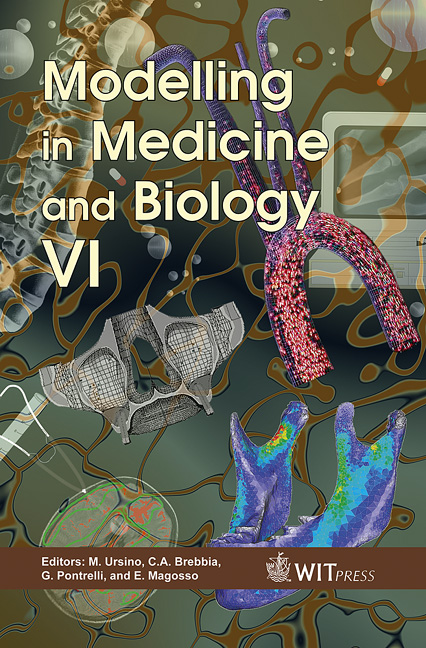A Theoretical Study Of The Transient And Steady-state Cardiorespiratory Response To Exercise
Price
Free (open access)
Transaction
Volume
8
Pages
10
Published
2005
Size
540 kb
Paper DOI
10.2495/BIO050021
Copyright
WIT Press
Author(s)
E. Magosso & M. Ursino
Abstract
The cardiorespiratory adjustments during exercise have been analyzed through a mathematical model. It includes central chemoreceptors, responding to carbon dioxide in cerebral tissue, peripheral chemoreceptors, sensitive to arterial oxygen and carbon dioxide pressure and to arterial potassium concentration, the neurogenic mechanisms of exercise hyperpnea (including a fast and a slow dynamics), and local blood flow regulation. The model is able to simulate with good accuracy the cardiorespiratory adaptations clinically observed in response to several patterns of exercise, both as to the steady-state and dynamic conditions. In particular, the superimposition among the mechanisms included in the model reproduces the temporal heterogeneity of the ventilation response to a step work load during both the ON and OFF transitions. By using the model, the mechanisms contributing to each temporal phase have been individuated, and the functional importance of the different dynamics in the ventilatory response has been quantitatively assessed. The model may be of value to suggest possible scenarios able to interpret the complexity of ventilation control in exercise. Keywords: mathematical models, ventilation control, exercise hyperpnea, neurogenic mechanisms, peripheral and central chemoreceptors. 1 Introduction During exercise, the greatly increased metabolic demand has to be matched by an appropriate increase both of ventilation and blood flow, to provide a grater amount of oxygen (O2) and to remove the excess of carbon dioxide (CO2) production. In order this task is optimally performed, it is essential that several and complex series of responses are controlled and coordinated.
Keywords
mathematical models, ventilation control, exercise hyperpnea, neurogenic mechanisms, peripheral and central chemoreceptors.





